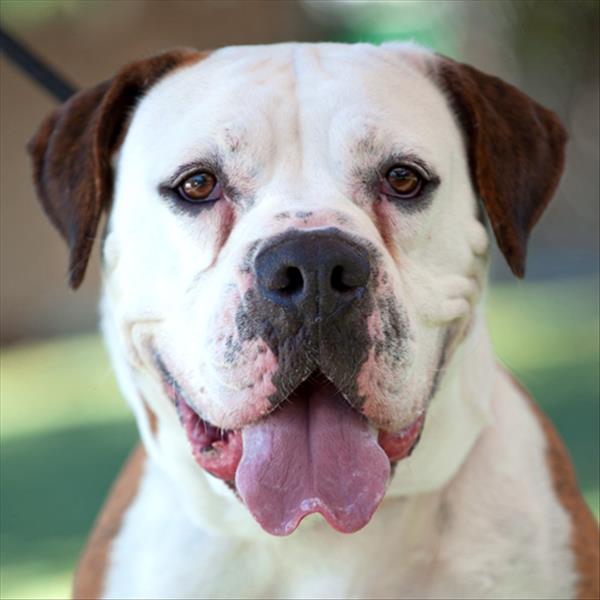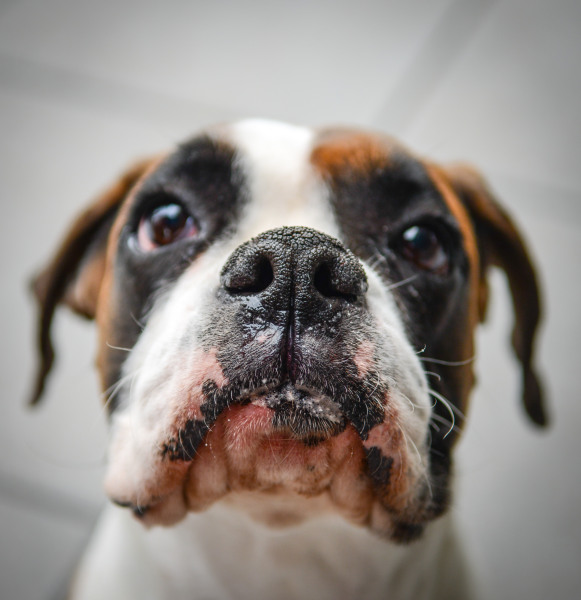For many dog breeds, tear stains are impawsible to ignore! You probably recognize the all-too-familiar reddish, brown spots on the inner corners of a Bichon Frise’s fluffy white fur. Or the seemingly permanent tear stains on a boxer’s eyes. Usually, breeds more prone to epiphora include shih tzu, Pekingese, boxer, pug, Boston terrier and bulldog. These dogs have shallow eye sockets or hair growth in the skin folds around their eyes, which makes tear drainage a problem. Bichon frise, Maltese and poodles have the same issues, and poodles and cocker spaniels are more prone to blocked tear ducts than other breeds.
If your dog has a light coat, he might have noticeable dark tear stains around his eyes. Oftentimes, it’s simply an aesthetic issue, but tearing and tear stains on dogs can also indicate a more serious underlying health condition. Although tear stains on white dogs (and light-colored dogs) may be more obvious, they can occur in any dog, regardless of breed or color, veterinarians say.
If the stains are getting out of hand, the dog will need his human to intervene and help him out with it. Here’s what you can do-
- Try to understand the cause behind excessive tearing. Since it is related to the eye, look at possible obstructions in that region. For example ingrown hair, hair growth way too near the eye, infection, diet/ water source, allergies, corneal ulcers or just a common condition in the dogs of certain breeds.
- Make fur hygiene a part of your dog’s daily routine. Wipe the eye region with a damp cloth soaked in saline or warm water.
- Add a teaspoon of white vinegar/ apple cider vinegar to your dog’s daily water intake. This will increase the acidity in your dog’s pH level which will stop yeast growth. Yeast growth is a major reason behind the stink.
- For preventive measures, consider using safe products like Zesty Paws Glucosamine, it’s hip and joint soft chews with chondroitin and MSM. It worked for our happy pup! Probiotics and Enzymes Digestive enzymes and probiotics work together to combat yeast and bacteria build up in the body that cause the reddish-brown tear stains. The results are not just less tear staining but improved overall health as well. Best of all, this is a remedy safe for puppies as well as adult dogs.
While following the above-mentioned steps, keep a few things in mind:
- Not every dog is the same, if you feel that the tearing is abnormally excessive, consult your vet! Epiphora is not a disease, but rather a symptom that stems from a number of causes. There might be an underlying problem that needs immediate attention.
- If the stains are brownish or rust-colored, they may indicate a current yeast or fungal infection on the skin, under the eyes, that can thrive due to the constant moisture from tears building upon the skin.
- Any change in tear staining, especially if it is accompanied by squinting or rubbing, warrants a vet visit.
- The aim of cleaning is to remove the accumulation of excessive tears, then allowing the area to dry afterward to prevent the build-up of moisture.
- Be cautious about doing anything around the eye!
We hope that this helps you. Say woof to your fur friend from us!
For the best that pet lifestyle has to offer follow Wendy Diamond on Facebook, Twitter, Instagram and right here at AnimalFair.com! Be sure to link all!




Leave a Reply